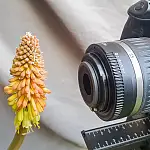Essential Photography Composition Rules To Improve Your PhotosLearn 10 key photography composition rules and how placement and relationship of elements within a picture can make or break a photograph.
This article is part of a series of articles. Please use the links below to navigate between the articles.
- Introduction to Photography Course - Definition & Types of Photography
- How Cameras Work and Terminology Explained for Beginners
- What is the Exposure Triangle and How Does It Affects Exposure?
- Understanding Camera Shutter Speed for Beginners
- Aperture and Depth of Field in Photography Explained
- What is Digital Photography ISO and Grain?
- How to Understand Camera Lenses and Focal Length
- Essential Photography Composition Rules To Improve Your Photos
- Camera Metering Modes Demystified - Which One To Use
- Camera Shooting and Exposure Modes Explained
- Complete Guide to Flash Photography for Beginners
- When and How To Use A Camera Tripod In Photography
- What Are White Balance And Colour Temperature Camera Settings?
- How to Use Camera Histograms in Photography for Perfect Exposure
- Master These 10 Camera Settings For Your Best Photographs
- Why You Should Be Shooting in RAW - Reasons and Benefits Explained
- Essential Photo Editing Techniques to Enhance Photographs
- Complete Guide to Macro Photography for Beginners
- Beginners Landscape Photography Guide for Stunning Photos
Photography composition rules are one of the most fundamental elements in a photograph. Composition refers to the placement and relationship of elements within a picture. The arrangement of elements in a scene, the angle they are shot at, and the distance the photo is taken from, can completely change the final outcome of the photograph. Good composition engages the viewer and holds their attention.
The various elements of photography composition are patterns, texture, symmetry, asymmetry, depth of field, lines, curves, frames, contrast, colour, viewpoint, depth, negative space, filled space, foreground, background, visual tension and shapes.
There are 10 basic rules of photography composition to follow, some of them so simple you can master them instantly!
The Rule of Thirds - The Primary Photography Composition Rules
One great way to improve a shot is to consider the rule of thirds. Composing a shot so that it is broken up into thirds is more pleasing to the eye. The Rule of Thirds is the simplest composition technique, the easiest to master and quite possibly one of the most effective. This technique is so effective, many cameras have a feature to overlay the rule of thirds on the LCD or viewfinder.
The basic principle behind the rule of thirds is to imagine breaking an image down into thirds (both horizontally and vertically) so that you have 9 parts. You should aim to line up elements in the photo on the four lines and place important subjects at the intersection of the lines.
The examples below illustrate the rule of thirds.
Avoid the Middle
When starting in photography, it is very tempting to point your camera at exactly whatever you're shooting. However, this produces rather static, boring pictures. One way to overcome this is to use the rule of thirds, the other is to move your subject away from the centre and get a feel for how it can be balanced with everything else in the scene. This includes any areas of contrasting colour or light. There are no hard and fast rules about achieving this kind of visual balance, but you'll quickly learn to rely on your instincts - trust that you'll know when something just looks right.

Highlighting Subjects with Focus
Deciding what is in and out of focus in your shot is very important for the image composition, and can be controlled with an appropriate depth of field.

If you are taking a portrait image, you will likely want the subject matter to be sharply in focus, with distracting background detail blurred out. A landscape shot, on the other hand, will probably require most of the subject matter to be in focus unless you are focusing on a specific object.
Draw in your Viewer with Leading Lines
A poorly composed photograph will leave your viewers unsure about where to look, and their attention might drift aimlessly around the scene without finding a clear focal point. However, you can use lines to control the way people's eyes move around the picture. Converging lines give a strong sense of perspective and three-dimensional depth, drawing you into an image. Curved lines can lead you on a journey around the frame, leading you towards the main subject.
Lines exist everywhere, in the form of walls, fences, roads, buildings and telephone wires. They can also be implied, perhaps by the direction in which an off-centre subject is looking.

Give Subject Space to Move
Even though photographs are static, they can still convey a strong sense of movement. When we look at pictures, we see what's happening and tend to look ahead - this creates a feeling of imbalance or unease if your subject has nowhere to move except out of the frame. You don't just get this effect with moving subjects, either. For example, when you look at a portrait you tend to follow someone's gaze, and they need an area to look into. For both types of shots, then, there should always be a little more space ahead of the subject than behind it.

Be Mindful of the Background
We've all taken that photo of a family member or pet which looked perfect at the time, however, when viewing the photo later there is a tree growing out of someone's head!

Be mindful of how backgrounds will affect your photography composition and use the photo playback feature to check the results. Also be aware of anyone else moving in the background, for example, someone wandering in a field during a wedding photoshoot. These will distract viewers from what is important and spoil the results.
The Odd Rule
The odd rule of photography composition is that subjects should be grouped in odd numbers. An odd number of subjects is psychologically seen to be more interesting and therefore pleasing. The theory is that if there is an even number of subjects, your brain finds it easy to organize the subjects into pairs and bringing in symmetry and dullness. Odd numbers of subjects throw that symmetry into chaos and the photo becomes "interesting". Also, the human eye tends to wander to the centre of a group. With an even number of objects, your eye will end up at the negative space in the centre. If you have only one subject, accompany it with two supporting objects, one on either side, so that your main subject is the centre of the group.

Visual Weight
Visual weight is different to size or weight as we know it. It's all about what we're drawn to when we look at a photo. When you understand visual weight, you'll start to understand how people look at photos and how you can position certain elements in a frame to direct the viewer's attention to where you want them to look. It's not so much a tool or a rule, but an understanding.
The main principles of visual weight are colour, contrast, lightness/darkness, size, density and complexity. You can read more about visual weight in graphic design in my guide to Graphic Design Elements & Principles.
Triangle Rule for Photography Composition
Triangles are in almost everything we see in one way or another, it's just a case of distinguishing and knowing what to do with them.
Triangles make great compositional tools as they're easy to make and manipulate, and are remarkably common. They are also a great way of combining different compositional techniques, such as lines and paths, to create a more interesting part of a photograph.
You can even use them to make a photo feel more stable or unstable.
Remember - Photography Composition Rules are Meant to be Broken!
Photo composition is a little like a visual language - you can use it to make your pictures pass on a specific message. However, just as we sometimes use the written word to create a deliberately jarring effect, we can do the same with photos by breaking with standard composition conventions. For every rule suggested here, there is a fantastic photo that breaks the rule. The trick is knowing which rule to use, and when to break it.













